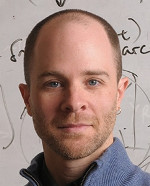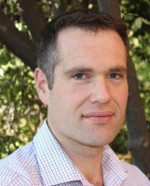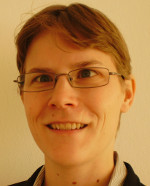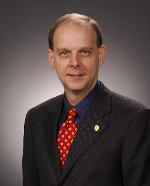Quantum Talks - April 2021

The recording of this event is available to IEEE Quantum Technical Community subscribers. Please sign in with your account below to access.
If you are not a participant of our Technical Community, join today for free.
Agenda
Quantum Hardware - Physics
Friday, 23 April 2021 • All times PT
| 9:30am - 10:00am: Introductions and Keynote - Reena Dayal, Carl J. Williams, NIST |
| 10:00am - 11:00am: Dr. Anne B. Nielsen, Max Plank Institute |
| 11:00am - 12:00pm: Dr. Lincoln Carr, Colorado School of Mines |
| 12:00pm - 1:00pm: Dr. Marcus Doherty, Australian National University |
| 1:00pm - 1:05pm: Wrap-up and Vote of Thanks + Invite to join the Technical Community |
Speakers
Prof. Carr’s theoretical research in quantum information science is focused on quantum complexity, open quantum systems, and quantum transport. He works with real-world physical architectures in both quantum simulators and quantum computers, ranging from superconducting circuits to ultracold molecules in optical lattices to multimode optics.
Topic: Entangled quantum cellular automata, physical complexity, and Goldilocks rules
Abstract: Cellular automata are interacting classical bits that display diverse emergent behaviors, from fractals to random-number generators to Turing-complete computation. We discover that quantum cellular automata (QCA) can exhibit complexity in the sense of the complexity science that describes biology, sociology, and economics. QCA exhibit complexity when evolving under "Goldilocks rules" that we define by balancing activity and stasis. Our Goldilocks rules generate robust dynamical features (entangled breathers), network structure and dynamics consistent with complexity, and persistent entropy fluctuations. Present-day experimental platforms -- Rydberg arrays, trapped ions, and superconducting qubits -- can implement our Goldilocks protocols, making testable the link between complexity science and quantum computation exposed by our QCA.
Reference: https://arxiv.org/abs/2005.01763
Marcus is internationally recognised as a principal contributor to the emergence of diamond-based quantum technologies, including quantum microscopy, quantum computing and quantum communications. These technologies represent new paradigms of microscopy, computing and communications that have the potential to revolutionise many disciplines of science and technology.
Marcus’ research is characterised by the application of first-principles understanding of optical defects in diamond to the innovation of quantum technologies. His current research pursues three parallel programs:
Defect discovery and engineering
Quantum microscopy
Quantum computing and communications
The activities of these programs span from first-principles defect theory and modelling to the design and demonstration of quantum devices.
Anne Nielsen is an associate professor in theoretical physics at Aarhus University, Denmark, where she leads the group 'Quantum Many-Body Systems'. She obtained her PhD degree from Aarhus University in 2010. After that she worked at the Max Planck Institute of Quantum Optics for 5 years. She then took up a position as independent Max Planck research group leader at the Max Planck Institute for the Physics of Complex Systems before moving back to Aarhus in 2021. Her group studies the properties of strongly correlated quantum many-body systems.
Topic: Anyons in Quamtum Many-Body Systems
Abstract: Fundamental particles can be divided into bosons and fermions. Nevertheless, if one puts many bosons or many fermions together, it is possible, under certain conditions, to form quasiparticles that are neither fermions, nor bosons, but anyons. Anyons have strange properties. They can, e.g., have a charge that is only a fraction of the elementary charge, and if one exchanges two anyons, the wavefunction of the system changes either by a phase factor or is transformed into a different state. Surprisingly, the change is robust against local noise. Anyons have been observed in the fractional quantum Hall effect in solid state systems, and there is currently much effort towards realizing fractional quantum Hall physics in ultracold atoms in optical lattices, since this would give new tools to study the anyons in detail. Here we propose methods to construct families of fractional quantum Hall models in lattices, and we show simulations of the anyons giving access to their size, shape, charge and exchange properties. We also demonstrate that anyons can appear in fractal dimensions and that anyons can themselves form anyonic quasiparticles.
Carl J. Williams is the Deputy Director of the Physical Measurement Laboratory (PML), National Institute of Standards and Technology (NIST). He is a Fellow of the Joint Quantum Institute (http://jqi.umd.edu) and the Joint Center for Quantum Information in Computer Science (http://quics.umd.edu) and Adjunct Professor of Physics at the University of Maryland (UMD). He directs the Quantum Information Program and helps lead the National Strategic Computing Initiative at NIST. He is a member and chairs interagency efforts in support of these activities under the Committee of Science of the National Science and Technology Council. He is a member of the Executive Leadership Team within the PML and represents the PML to other federal agencies.
Dr. Williams received his B.A. in Physics from Rice University in 1981, his Ph.D. from the University of Chicago in 1987, joined NIST in 1998 becoming coordinator of the NIST Quantum Information Program in 2000 and Chief of the Atomic Physics Division of the NIST Physics Laboratory in 2004 before being appointed Chief of the Quantum Measurement Division of the NIST Physical Measurement Laboratory in 2011. In 2006, Dr. Williams helped establish the Joint Quantum Institute (JQI), became a founding Fellow of the JQI, and the first NIST co-Director of the JQI – a positioned he held until spring 2011. Dr. Williams worked as a senior policy analyst within the Office of Science and Technology Policy (OSTP), Executive Office of the President from April 2008 until July 2010. He is a Fellow of the American Physical Society, the American Association for the Advancement of Science, and the Washington Academy of Science. He received the Department of Commerce Silver Medal in 2003 for his leadership of the NIST Quantum Information Program, the Department of Commerce Gold Medal for science in 2008 for scientific contributions and was awarded the 2005 Arthur S. Flemming Award for Scientific Excellence in Government Service for his contributions to quantum physics. He is an Associate Editor of the Journal of Quantum Information and Computation, has authored over 110 scientific publications, and has been a speaker at numerous national and international conferences.
Join IEEE Quantum
Quantum Talks session recordings are available to IEEE Quantum Technical Community subscribers. If you are not a participant of our Technical Community, join today for free.
Past Quantum Talks
Learn about past sessions and access recordings on-demand:
Contact
If you have any questions or would like to get involved with the Quantum Talks series, contact us at This email address is being protected from spambots. You need JavaScript enabled to view it..
Brought to you by:





 Lincoln Carr
Lincoln Carr Marcus Doherty
Marcus Doherty Anne B. Nielsen
Anne B. Nielsen Carl J. Williams
Carl J. Williams